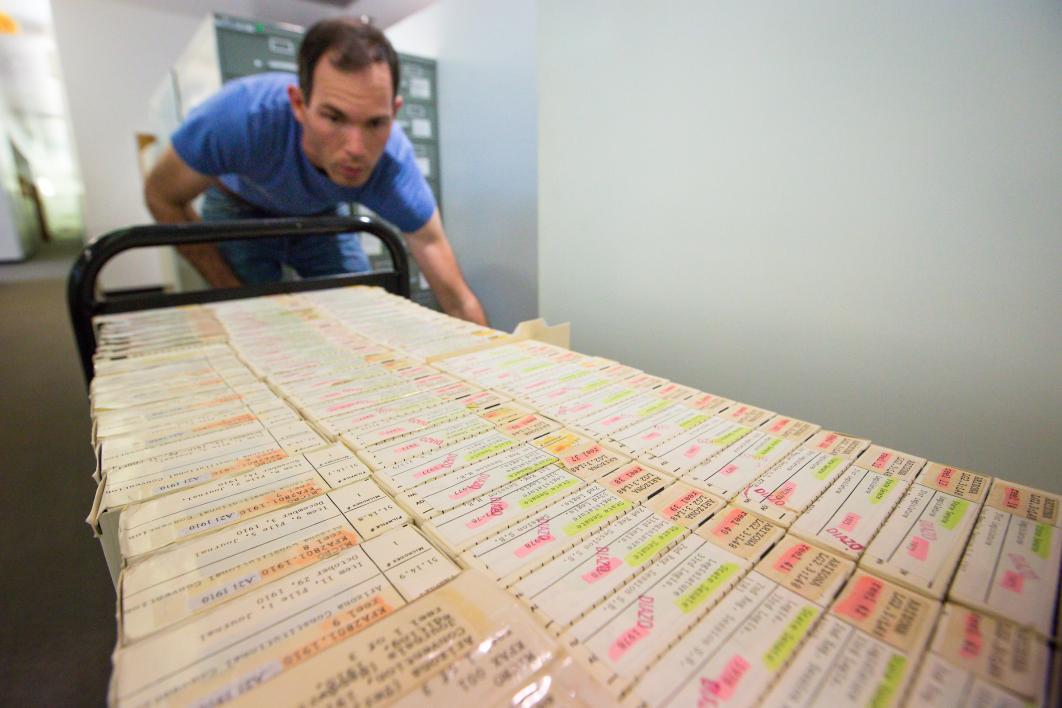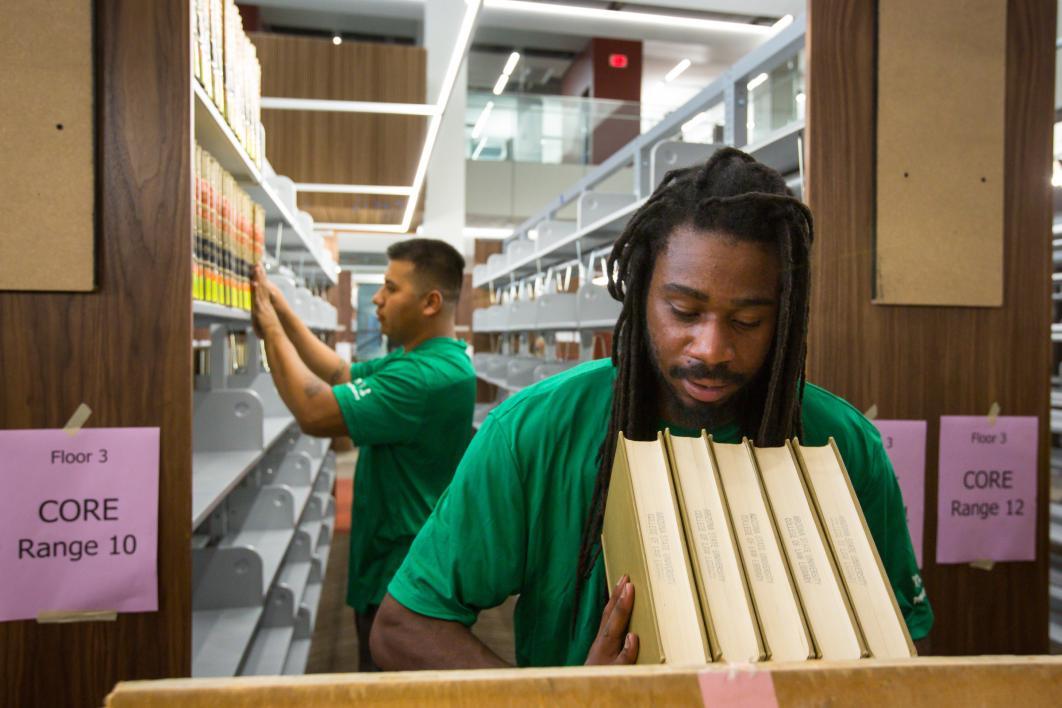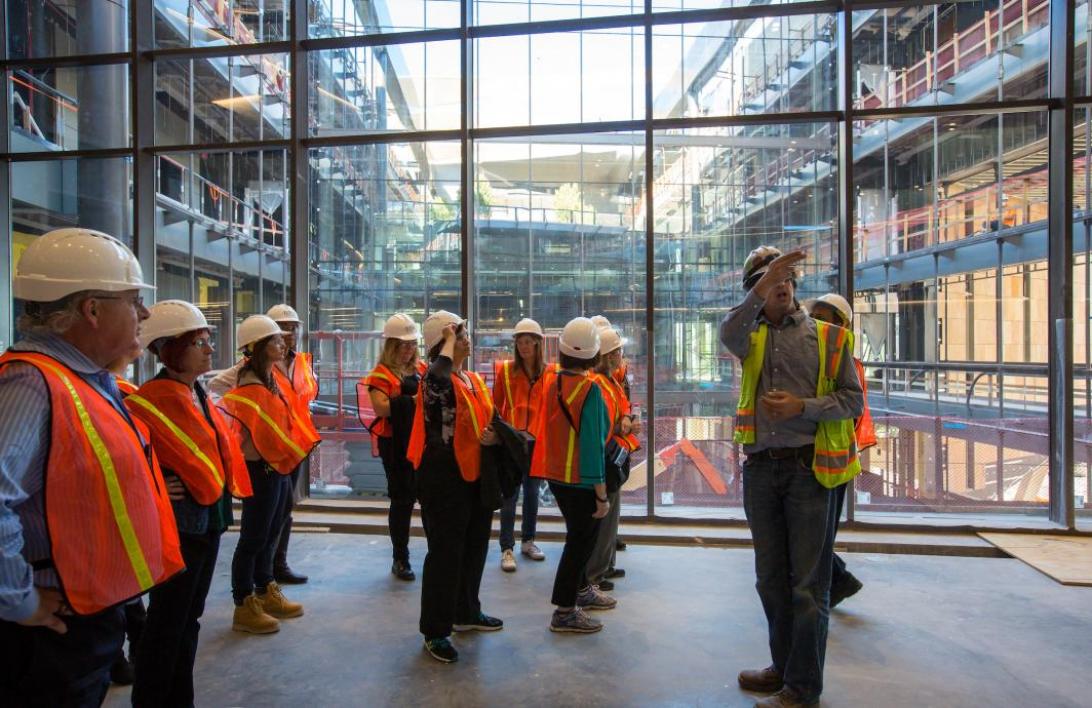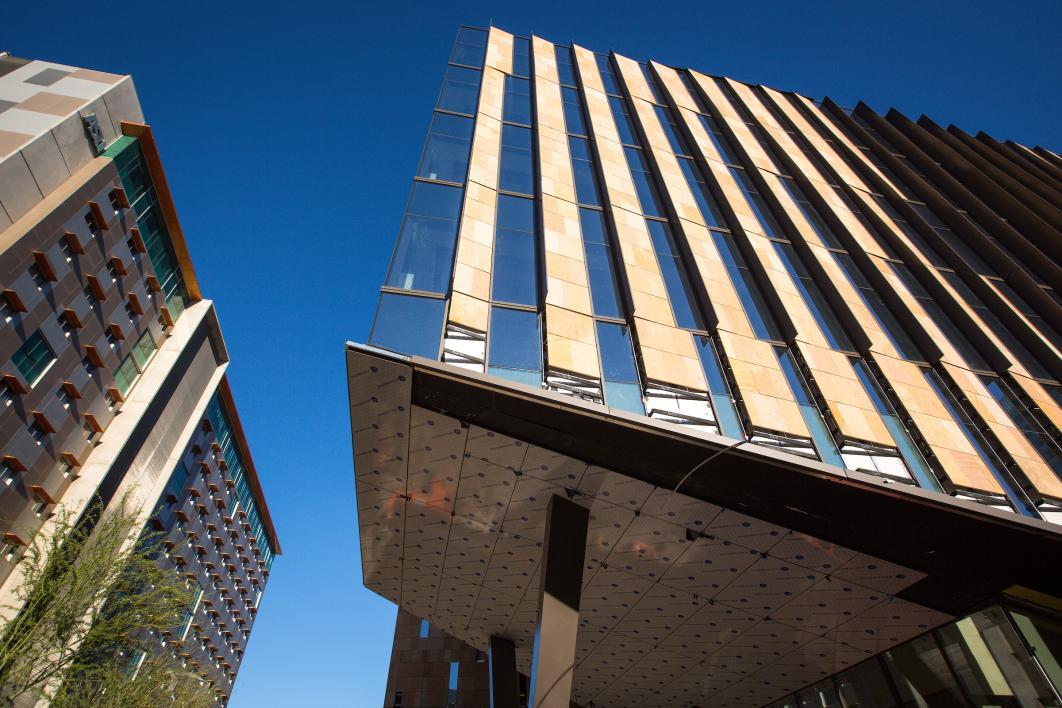Arizona State University’s law school dean was candid about the transition into his $129 million new digs.
“There is no easy move,” said Doug Sylvester, head of the Sandra Day O’Connor College of Law, checking off the complications of going from a squat, tan building in Tempe to a sparkling state-of-the-art facility in downtown Phoenix. “There were a lot of hiccups. No power. Some of the computer systems weren’t running. And issues with lighting, heating and cooling.”
But it’s almost over, he said.
On Aug. 15, ASU Law plans to celebrate the grand opening of its new home at the Arizona Center for Law and Society, capping a decade-long relocation project aimed at making the school more accessible to top lawyers, government officials and everyday people.
“The goal is to create a single point where students, educators, political leaders, the legal community and the public can interact and connect,” Sylvester said. “That is different than any other law school in the country.”
'Pardon my dust'
A few stragglers remain at Armstrong Hall, ASU Law’s home since its inception in 1967. The overwhelming majority of the college’s faculty and staff, meanwhile, are already settling into their new 280,000-square-foot, six-story space, which is “still a bit of a mess,” Sylvester said, as crews finish their work.
It’s been a bustling scene recently. As Sylvester spoke, a worker jackhammered a sidewalk, a loading dock filled with shipments and movers hauled furniture and equipment past “pardon my dust” signs.
In a few weeks, ASU Law, one of 12 occupants inside the Center for Law and Society building, will be home to 900 students. The group will be closer to the state Capitol and legal district, providing them with better access to internships and professional opportunities, Sylvester said.
The school’s location and design mark a departure from traditional law school “fortresses,” as Sylvester called them, that refrain from community and civic engagement. ASU Law’s new home features open spaces, retractable walls and glass-enclosed classrooms to encourage interaction and transparency, Sylvester said.
“If you put up doors and guards and security, members of the general community are not going to come in because they feel unwelcome the minute they arrive,” Sylvester said. “It was more expensive to build this way, but we felt that was necessary and think it is part of our mission.”
Finding a new home
The move has been a priority for ASU President Michael Crow since at least 2003 when he and Phoenix’s mayor at the time, Phil Gordon, met for breakfast and sketched — on a plain, white napkin — a downtown campus that could enhance the creativity in the city’s core.
The sketch became a blueprint for ASU’s vision of the urban college experience: a campus geared toward city-minded students drawn to professional development and service-oriented careers in government, media, nonprofit, medical and legal work.
Phoenix voters approved a $223 million bond plan about three years after Crow and Gordon’s meeting to pay for ASU’s Downtown Phoenix campus, which includes several colleges serving about 12,000 students. The measure passed easily with two-thirds of the vote. What wasn’t so easy was finding available land for the building that would become home to ASU Law.
In 2010, a vacant motel came up for sale and the city of Phoenix purchased it for $5 million, using the last of the bond funds. ASU and city officials celebrated, but a contingent of preservationists pushed back.
The former Sahara Motor Inn, built in 1955, had been a mid-century marvel with period-style materials that included red brick, mosaic tiles and floor-to-ceiling glass. Marilyn Monroe stayed in one of the inn’s two penthouses during the filming of “Bus Stop.” But the sentimental push, led by the Downtown Voices Coalition, fell short for a building that had most recently been a pink-stucco Ramada Inn.
Work started in 2014 after the city provided the land and an additional $12 million to start construction.
Some say it was none too soon.
“We were bursting at the seams,” facilities manager Allan B. Crouch said. “We actually had to put file cabinets out in the hallways because of the school’s growth.”
Armstrong Hall, ASU Law’s home on the Tempe campus, went through two major renovations and an expansion over its five-decade history, but still had an array of problems that included a leaky roof and faulty plumbing.
Also, there were stacks of legal and research papers at every turn.
In addition to the hallway file cabinets, professor Zachary Kramer joked that one of his colleagues had “piles of papers larger than the size of me.”
That won’t be an issue downtown. Law school faculty and staff, including the Ross-Blakely Law Library, were told to go digital by purging most of their books and papers before the move.
Victoria Trotta, the law library’s assistant dean, was put in charge of shedding nearly 240 tons of material. That much paper, laid end to end, would stretch between New York and Los Angeles more than three times.
The process took five years and contractors had to install a special trash chute to accommodate the work, Trotta said. Most of the books were recycled or sent to other institutions, she said.
Reflecting growth
The new building reflects the growth of ASU Law, which bucks a national trend, Sylvester said. Law schools across the U.S. have cut staff amid declining enrollments over the last five years, he said.
Not so at ASU. Aside from increases in students and staff, the law school has also secured a top 25 ranking from U.S. News and World Report and has been recognized as the top school in the state for graduates successfully passing the bar exam.
Sylvester is looking to build on that momentum in the Arizona Center for Law and Society, which also has spaces for think tanks, several legal aid clinics, a first teaching law firm and a permanent office for retired U.S. Supreme Court Justice Sandra Day O’Connor.
“It’s a place where if you think you need a lawyer, we can help you find one or refer you to a firm,” Sylvester said. “That feature is really unique among any law school in the country and advances the ASU mission across the board.”
As with any exciting move, some are experiencing bittersweet feelings as well.
Dawn Lee, director of the law school’s career services division, attended ASU’s law school more than 20 years ago and feels an attachment to the Tempe building.
But, “I’m really excited about the move. It’ll be an amazing experience for all of us to be in that environment.”
Top photo: Volumes of microfilm are among the items that had to be moved in order for ASU Law to transition into its new home in downtown Phoenix. Library assistant Andrew Story helps pack up in Tempe on on Monday, June 13. Photo by Charlie Leight/ASU Now
More Law, journalism and politics

How to watch an election
Every election night, adrenaline pumps through newsrooms across the country as journalists take the pulse of democracy. We gathered three veteran reporters — each of them faculty at the Walter…
Law experts, students gather to celebrate ASU Indian Legal Program
Although she's achieved much in Washington, D.C., Mikaela Bledsoe Downes’ education is bringing her closer to her intended destination — returning home to the Winnebago tribe in Nebraska with her…

ASU Law to honor Africa’s first elected female head of state with 2025 O’Connor Justice Prize
Nobel Peace Prize laureate Ellen Johnson Sirleaf, the first democratically elected female head of state in Africa, has been named the 10th recipient of the O’Connor Justice Prize.The award,…






